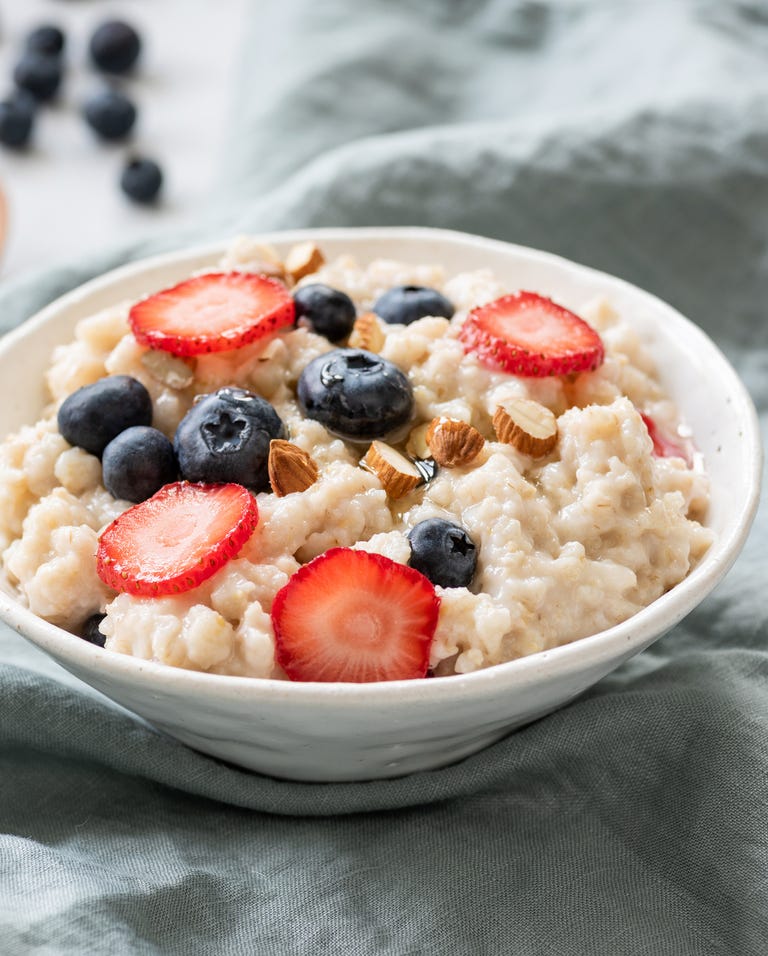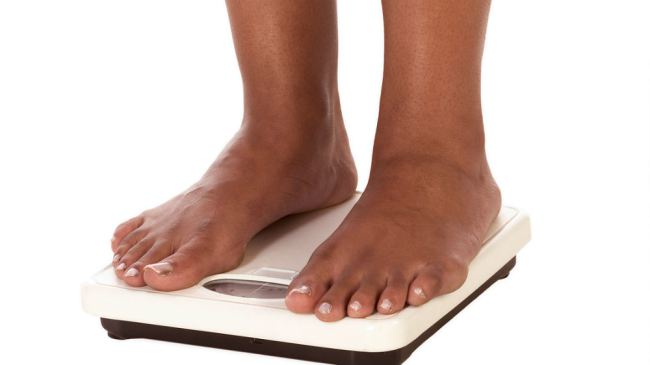Losing weight doesn’t have to be so bad.
Perri O. Blumberg
So you want to drop 20 pounds? Don’t worry, it won’t require completely overhauling your lifestyle. A few sustainable tweaks to your typical routine can help you drop the weight without much fuss. Of course, it won’t happen overnight.
“The length of time it will take to lose 20 pounds depends on a variety of factors, like genetics, exercise, and current nutrition habits,” says Jennifer McAllister, MS, R.D., a performing Strongwoman and a dietitian who works primarily with athletes and entertainers (two groups who sure as hell know how to optimize their nutrition).
“A generally accepted rate of healthy weight loss is a half-pound to one-pound per week. So, budget five-to-six months to achieve a 20-pound weight loss,” she says. McAllistre explains that losing weight slowly helps you keep the weight off.
To get started, follow the expert-approved tips below:
Eat your vegetables
“Make half your plate vegetables. You will feel full from the fiber in the vegetables, and even just chewing them will slow down your eating (which makes you feel more satisfied),” says McAllister. She advises that frozen vegetables are just as good as fresh vegetables, and cheaper, too. If you opt for canned vegetables, make sure they’re of the “no salt added” variety. Advertisement – Continue Reading Below
You may be wary about adding so many vegetables to your meals due to their carbohydrate content, but the carbs you really want to avoid are the empty ones: White bread, white pasta, and (sorry) potato chips and french fries, which are not nutrient-rich. Sure, a sweet potato has around 26 grams of carbs per serving, but it also has Vitamin A, Vitamin C, B6, calcium, and is high in fiber—all things that help your body perform at its peak.
Reduce stress
Yes, nutritionists think beyond food when it comes to achieving weight-loss for the long-term. “Anyone trying to lose weight should also evaluate psychosocial factors relating to weight loss and how their changed food regimen and workout plan will affect their psychological state, how it may fuel stress, how it may affect sleep, and how it may affect social relationships,” says Monica Auslander Moreno, MS, R.D. and nutrition consultant for RSP Nutrition. “Weight loss isn’t just eat this, this much, and at this time—we are not PEZ machines.”
To that point, consider adding some mindfulness-based practices into your life. You don’t need a saffron robe to meditate (apps like Headspace or Simple Habit make meditation an ingrained daily habit), so try it out. Add stress-reducing yoga to your workout routine. Research even shows that going for a walk outside can ease anxiety, slash food cravings, and help you ward off disease.
Eat a balanced breakfast
You’ve heard it before, but it bears repeating: Having a healthy breakfast can help you avoid eating junk food throughout the day, give you energy, and jumpstart your weight loss efforts. “Start each day with a high-fiber breakfast with protein,” says Brocha Soloff, R.D., CDN. Some simple options include: black beans, avocado, and hot sauce with a slice of whole grain toast; oatmeal with peanut butter and fresh fruit; an egg-and-tomato open-faced breakfast sandwich.
Soloff suggests avoiding added sugars and drinking plenty of water each morning. “You should aim to drink three liters of water a day,” she adds. You can often mistake thirst for hunger, so staying hydrated during your weight loss efforts is key.

Arx0ntGetty Images
Eat filling snacks
Snacks are an easy way to add hundreds of calories to your day without noticing since we’re often on the go or hunched over a desk when we’re pigging out. “Frame losing 20 pounds as a project, with specific goals,” says John La Puma, M.D., New York Times best selling author of REFUEL: 24-Day Eating Plan to Shed Fat, Boost Testosterone, and Pump Up Strength and Stamina: “It’s easy to miss the goal if you can eat in-between, and after and before meals.” With that in mind, La Puma opts for apples (“something with crunch, mass, and a little sweetness”) or a few squares of dark chocolate if you need something to tide you over between meals.
Cook at home more
This is easier said than done, but meal prepping is well worth the effort. “Prepare more of your meals yourself. The easiest way to do that is to cook in bulk. Freeze in individual portions and then you can mix and match foods to have different meals throughout the week,” advises McAllister.
Not to mention, it’s a hell of a lot cheaper than all those sad $12 sandwiches.
Eat out less frequently
It’s just hard to know exactly how you’re meal is prepared, which means you could be underestimating calorie intake.
“The amount of fat, salt and sugar added to restaurant meals is impossible to know,” says McAllister. “Treat a restaurant meal as a special occasion, not a part of your day-to-day living. Instead, bring a big salad or dinner leftovers to work for lunch,” she advises.

